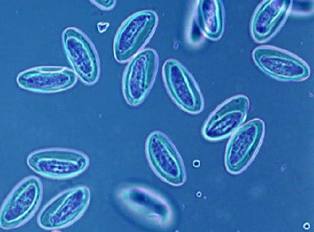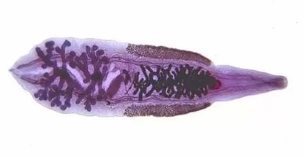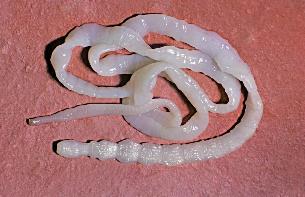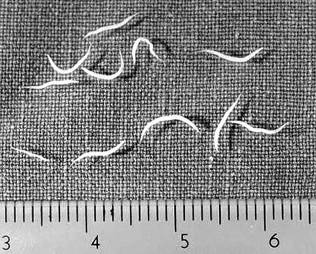
Helminthiasis is one of the most common diseases in children and adults. In the human body can parasitize various species of worms. There is an opinion that is far from the medicine that the worms only in the digestive tract, in fact, worms parasitize virtually all internal organs – liver, lungs, heart, brain, head, as well as in muscle tissue, under the skin and in the eye. The article States that worms, the people.
Classification
There are a large number of worms that can affect humans, the following are the most common of them. Most of the worms belong to any of the 3 groups of trematodes, cestody or nematodes.
Trematode is a class of parasitic worms, flat shape, there are about 40 types of worms that infect humans. The most common are:
- Feline or Siberian liverworts (causing opisthorchiasis);
- Schistosoma (causing bilharzia).
Cestody it tapeworms are flatworms. The representatives of the hooks, the digestive system is missing. Often, the people who inspire:
- bullish tsepen (caused teniarinhoze);
- Swine tsepen (cysticercosis caused);
- Echinococcus (hydatid disease caused).
Nematodes round worms, primary cavity radiator. Common worms that infect humans:
- pinworms;
- Thread worm;
- whip worm.
Worms in humans — signs in the photo (most of the worms in the stomach suggests, therefore, nausea and vomiting, diarrhea or constipation, intestinal obstruction, gratuitous weight loss, loss of appetite or excessive Hunger):
Feline or Siberian Fluke

Feline or Siberian liverworts – small parasites lantsetovidnoy forms from the group of liver-flukes. The causative agent of the disease opisthorchiasis. In the length of the cat's dvuustka 8-18 mm, width 1.2-2 mm. the parasite develops in two hosts in organisms — between and final. Between-host – molluscs and fish, the carp, the End of man.
Together with the faeces of infected people and animals, the eggs fall into the fresh waters, there are clams to swallow. In the body of the mollusk eggs, the infectious stage is reached – tserkarii are, leave tserkarii are perfectly matched to each other and embedded in the body of others karpovyh some no fishes, or traps in your body through the consumption of fish shellfish. In the body of the fish the parasite develops to meta tserkarii, the reach of the cyst, its size is 0.17 to 0.21 mm.
The consumption of the infected fish, the man is in his organism, meta leave tserkarii are cysts, from the stomach and intestine go into the liver and bile ducts. In these organs they remain parasitize, and after 10-12 days, advanced stage, begin to lay eggs. In the body of the people cat's dvuustka para up to 10-20 years to survive.
Schistosoma
Schistosoma – Blood Flukes. It is a flat line, a dioecious helminths, the length of 4-20 mm, in width up to 0.25 mm. Body Schistosoma with 2 suction cups – mouth-and belly space, you are not far from each other. The females of Schistosoma longer and thinner than the males. On the body of the male with a longitudinal groove, with its help he keeps the females. Their eggs with a diameter of 0.1 mm, oval shape, is located on the surface of one of the poles of a large mandrel.
The human worms Schistosoma in the role of the definitive host choosing people, in the organisms they parasitize in the small veins, large intestine, abdominal cavity, uterus, urinary bladder. Worms feed on blood, some of the nutrients suck through the cuticle. Eggs of Schistosoma are bladder into the intestine and bladder, where the tire and drawing to the outside along with the feces or urine. In freshwater aquatic larva from the eggs, its intermediate host mollusks. In the body of the mollusk meta tserkarii are to develop, to tserkarii are for 4-8 weeks.
Bullish tsepen

Bullish tsepen – Band parasite that causes teniarinhoze the disease. These huge worms, which can grow to 3-12 meters long. On the body of the parasite is the small head with a diameter of up to 3 mm, the neck, and about 1000 segments. After the penetration in the human body, together with thermally unaffected, infected meat tapeworm hanging on the walls of the intestine with the help of 4 suction cups.
In hermaphrodites segments of the eggs of the worm are deposited annually, a sample of up to 600 million eggs. Similar helminths in humans, parasitize in the intestine of 20 years and more, if there is no timely treatment.
Swine tsepen
Swine tsepen, such as bullish, on the body 4 suction cups, but also the body of the worm has a double hook whisk. Two – three meters in length. In the case of pork tapeworm, three-part ovary, with each side of the uterus has branches from 7 to 12. A characteristic feature of this worm's ability to crawl segments from the Anus. After the output to the outside of your bowl is dry and burst, so in the external environment, the eggs of the worm enter. Intermediate host tapeworm pig and human can.
The primary host – humans. Intestinal parasites in humans include pork tapeworm, helminth, is located in the intestine of the patient, where it lays its eggs. The infection occurs in the use of invasive meat.
Echinococcus
The causative agent of echinococcosis in 3-5 mm length is reached. Consists of a head, on which four suction cups and two hooks, whisk, and three or four segments. The last of the segments has a developed reproductive System. Intermediate host – animal or human, the definitive host – dogs, wolves. The infection occurs through oral.
Echinococcus enters the intestines, where the eggs larvae. With the help of the hook, the larvae penetrate into the portal vein, from where, together with the blood are most commonly in liver, lungs, muscle tissue.
Pinworms

Pinworms round worms, the pathogens enterobiosis, the so-called disease of dirty hands. In a larger scale infestation by pinworms children are affected. The infection occurs through oral and contact-household. Can see these worms in feces.
The females of the pinworm of the genus in the length of 5-10 mm, males – 3 mm. The shape of the body in the case of pinworms spindle-shaped milky-white color. The end of the body when the females slightly pointed. Adult worms parasitize in the lower sections of the small and large intestine of man attached to the wall with the help of the associations of the vesicles. In order to lay their eggs, the female pinworms go in the rectum, crawl out and lay their eggs in the anal area, and then die. Deferred eggs invasive are already after 4-6 hours. The duration of life pinworms – one – two months.
Thread worm
Nematode – a representative of the class of round worms – parasites, causative agent of Ascariasis. These helminths yellowish – pink colour, have an elongated spindle-shaped, dioecious. The female roundworms can grow up to 20-40 inches, the males reach a length of 15-25 cm. Every day, an adult female roundworm can lay more than 200 thousand eggs, which, together with the feces of the people in the external environment, where by 12-14 days are invasive.
In the body of the people parasitizing in the gastrointestinal tract, located mainly in the small intestine. The full cycle of development of invasive eggs to Mature stage takes about 3 months.
Whipworm
Whip worm, round worms, the trichozefales. helminths reports a fine brown nematodes with fine thread-shaped the front part and a rounded rear end. The female whipworms can grow up to 3.5-5.5 cm, and the males up to 3-4,5 cm. The larvae of the worms of the people located in the cecum, where and para of puberty, there lay eggs to survive in front of the stage. In the case of a massive infestation, the worms can also keep the colon including the rectum.
Every day, the female whipworms lay on 3,5 thousand eggs. The eggs of the worm have a barrel-like shape, covered with a thick brown coat, the poles are colorless "caps". The eggs get into the soil along with the faeces of the primary host, under favorable conditions, you can save invasive properties of up to two years. The duration of parasitism in the intestines of people – 5-7 years.








































